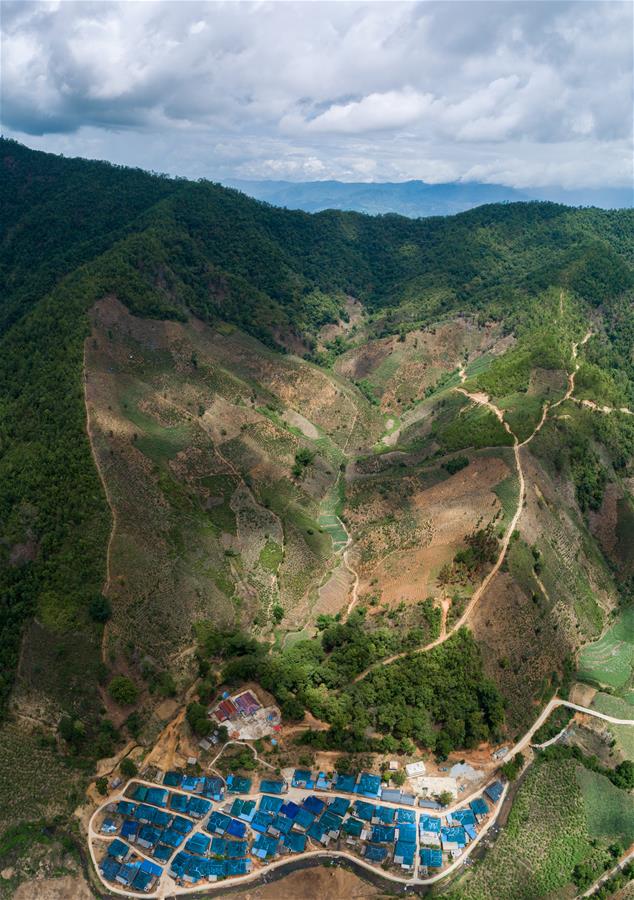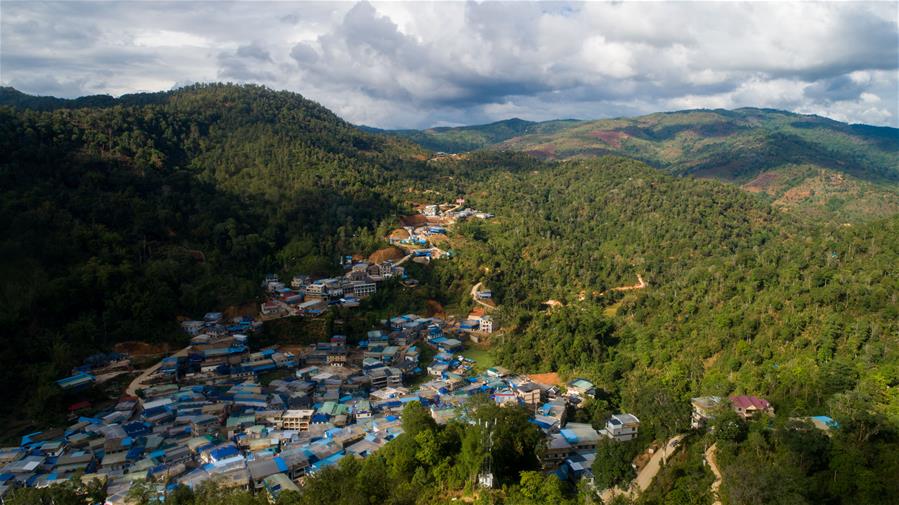Pu’er tea enriches ethnic villages
The contemporary legend of Bulang villages began in 2003 when the price of Pu’er tea was about to soar.
“As the so called “ancient Pu’er Tea” gained particular attention on the market, its price rocketed from only several yuan to100 in 2007, 200 yuan in 2009 and over 500 per kilogram today, respectively,” Yan tells the reporter.
“I have three hectares of old tree tea and five hectares of mixed one. They bring me 600,000 to 800,000 yuan of income each year,” he says.
“Two daughters of mine and their husbands have joined this profitable family business today,” Yan supplements.

A bird’s-eye view picture of a Bulang village is taken by drone.
Boosted by the rising tea price, new houses have mushroomed in Laoman’e, and motorcycles and trucks have become commonplaces in the village.
Several tea plants built outside the village even attract laborers from neighboring counties to come and work in tea gardens of Bulangshan.

Panoramic view of the Laoman’e village.